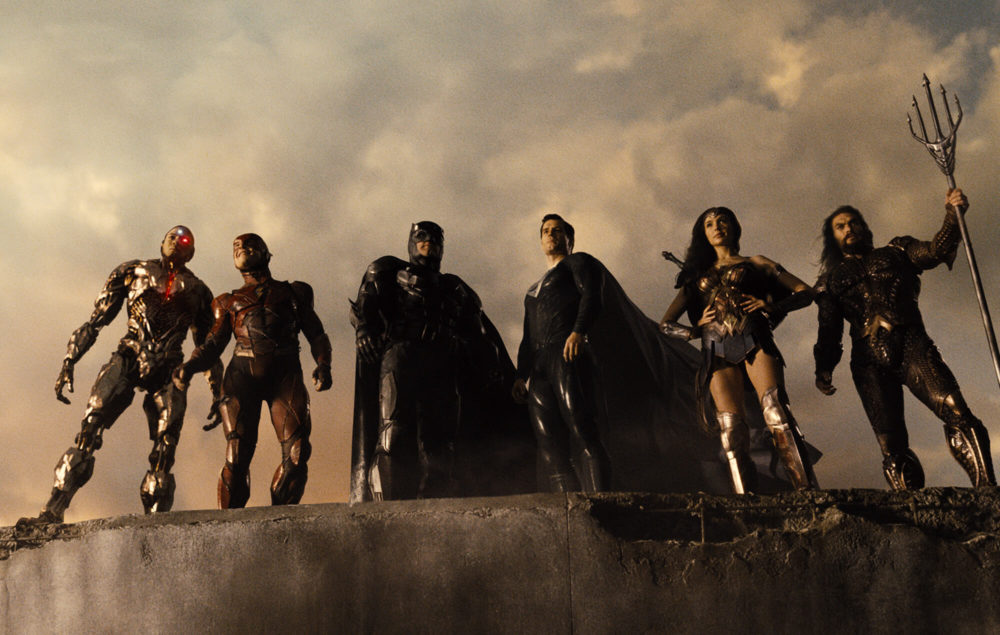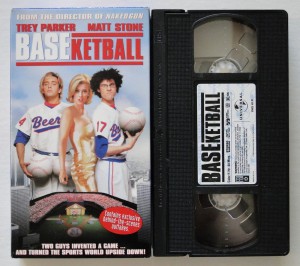
Ask anyone who doesn’t like them and they’ll tell you: Zack Snyder’s superhero films are much too serious, forgoing the relative levity of the Marvel Cinematic Universe in favor of a brooding tone beyond that of even Christopher Nolan’s Batman films, but without those movies’ grounding in something resembling reality. Detractors, at least those who are also comic book fans, will also say Snyder’s understanding of the source material is entirely superficial as he clearly possesses an eye for splash page-style composition but presents iconic superheroes in strange, sometimes overly aggressive iterations. I am familiar with this criticism of the director because I once shared it. But after years spent thinking over Batman v Superman, and especially upon watching (and immediately rewatching) Snyder’s four-hour Justice League, I’m now something of a convert. Where I once saw excessive darkness, I now see refreshing earnestness. And while the incoherence of the original cuts of those two movies (one famously taken from him) still stands, in their longer cuts both appear as remarkably coherent statements, deeply personal epics that aspire to mean something the way that more faithful and agreeable superhero movies consistently fail to. It is a testament to what the genre can be in the hands of an artist who takes it seriously without mutating it into something more palatable.
Fittingly, the man Warner Bros. brought in to swing a hatchet at Justice League is partially responsible for the dominant trend in superheroes twice over. He’s not the only responsible party for the film’s putrid released form—hint: the multibillion-dollar media conglomerate probably had more to do with it—but abuse allegations both on that movie’s set and beyond (allegations I absolutely believe) have turned him into even more of a villain. Joss Whedon’s The Avengers and punch-up work on the preceding Marvel movies turned the popular mode of blockbuster filmmaking into basically a quip factory. You can’t go more than five minutes in any given Marvel movie since without it poking fun at itself or deflating its own stakes with a joke. It’s an approach that aims to make once-nerdy material palatable to general audiences and one that goes back to (awful human being) Bryan Singer’s first X-Men, which Whedon did work on. I am not questioning Whedon’s interest in superheroes and even think an elongated cut of his embattled Age of Ultron might reveal that as the most thoughtfully compelling work in its franchise, but there’s no doubt in my mind that Singer didn’t give a fuck about the X-Men, doing away with the colorful spandex costumes and pushing the form into darker, more realistic spaces. Yes, that film takes seriously the metaphors at the heart of the comic, but it does so without a feeling for the specifics and with a general ethos that to sell those thematic elements you have to change the window dressing. Marvel’s current movies are much sunnier and more indebted to the comics they take from, but not much has changed: they only ever ask you to take them seriously when it’s convenient and only briefly at that.
The approach has, of course, produced inarguably the most popular works of our time but in doing so has created a distancing and insular experience which only points back to itself. When Thanos snaps at the end of Infinity War, half of the universe’s population evaporates. We only see how this affects the Avengers themselves and while watching Tom Holland cry his way out of existence might be alarming in the moment, there’s a lack of humanity to barely addressing the non-super rest of humanity. Walking out of that movie, you’re left with questions about what the Marvel Cinematic Universe will do next, but you never have to grapple with the end of the world or real loss.
Zack Snyder’s Justice League is also about apocalyptic scenarios caused by space aliens, but Snyder approaches the end of the world with a clear-eyed seriousness and a heavy heart. I don’t want to write too much about the tragedy of Autumn Snyder’s death—I was against the idea of #ReleasetheSnyderCut in the first place, figuring the man would want to grieve his daughter in peace and not return to a tragic moment in his life—but an overwhelming sense of loss pervades the film as much as slow motion does, and I don’t just mean the American Foundation for Suicide Prevention billboard in the movie or the “For Autumn” dedication at the end. This is a film that opens with the anguished scream of a dying Superman, the most important figure on Earth. He doesn’t say “Mr. Batman, I don’t feel so good,” he screams and it sends a shockwave throughout the entire world. Everything that follows proceeds from this and Superman’s eventual resurrection is played not primarily as a triumph over evil but as a family reunification, captured in a sequence more beautiful than anything in the genre. It reminded me of criticisms that accused Snyder of pretentiously ripping off Terrence Malick in Man of Steel. Maybe that is true, but I will take the actual beauty of a Malick ripoff over the pleasant nothing of a video game ripoff that so much of the MCU often resembles. Every individual character arc in this movie concerns fractured family, especially those of Cyborg and the Flash, who have similarly strained relationships with their fathers. Batman, of course, has dead parents in case you haven’t heard.
Like in Infinity War, we don’t spend very much time with human characters other than these superheroes, but with their relationships and personal goals front and center the result is very different. If the world ends, we all die. But the grief that future presents is not a mourning for our own demise but for the finality of not being able to move forward, to not mend our relationships or start new ones. The end of the world is the end of interpersonal possibility. Silas Stone brings his son back to life as a cyborg in the hope that, with more time, he can be a better father than he was. When we meet Barry Allen, the Flash, he saves a woman by using his superpowers. Here we see the possibilities of the slow motion used to convey his superspeed. The recent X-Men films employ a similar technique for Quicksilver, but while in those films the slowing of time simply makes for a cool setpiece, the Flash’s introductory moment uses Snyder’s signature technique as a means to explore perspective, conveying the loneliness of moving faster than everyone else but also capturing the yearning of love at first sight experienced in a freeze frame. If the world ends, Barry won’t just never free his father from prison, he’ll never even have the chance to see this new love through. It’s telling, too, that the Flash’s grand heroic moment in the final act—again one of the best sequences in any superhero movie—is not a common saving of the world, but a restoration of what has already started to disappear.
Throughout this genuinely epic film, filled with the sorts of grace notes and breathing room that would get cut first in a shorter version, Snyder never condescends to the genre. The costumes are the costumes, they do not need explanation or introduction, and while this is not a humorless film, there are no winking moments to cue an audience in that you need not take this too seriously. Even a possible pretension, like the decision to present the film in a square aspect ratio because Snyder believes superheroes are “vertical” rather than “horizontal,” pays off tremendously: the compositions in this film are so often awe-inspiring and lend themselves well to the film’s superlative action sequences. So much of what WB and Whedon cut from this film on a character level is baffling (whatever on set abuses he suffered, Ray Fisher has a right to be pissed just for what the film does to his character) but how they managed to ruin these action scenes is a real mystery. It has already been pointed out that the choreography of these scenes isn’t wholly inspired, but they are solidly blocked and cleanly edited with so many bravura shots and excellent speed ramping (say what you will about overuse, nobody does this like Snyder) that is so often invigorating. Comparing the fight scenes in Snyder’s film to the theatrical version is as good an example of what a director does as you’ll find in modern blockbuster filmmaking. Though most of the setpieces are in the theatrical version in some form, I could hardly recall them and several scenes struck me as totally new even though I had seen an extant, mushy take on the material four years ago.
Most impressive about this and perhaps the biggest takeaway is how Zack Snyder’s Justice League sheds light on the aims of the director’s DC Comics project. If superhero movies are going to lead into each other in an endless string, then each new entry should at least reframe the one before it. Man of Steel is an optimistic movie about the coming of a new god, but one that ends in Superman causing wanton destruction in Metropolis. If this angered some audiences, well, Batman v Superman agreed, taking the form of a text about alienation and disillusionment that is remarkably clear-eyed in its longer form. When I first saw that film, I thought it was garbage and couldn’t fathom decisions like making Gotham and Metropolis sister cities, a decision that now plays to me like a strong comment on the myopia of self-appointed heroes. The end of that movie leads into its sequel, a movie taken with ideas of faith and family that reaffirms the beauty of believing in heroes. If Snyder sometimes seems to be having his cake and eating it too, he is. But where I once saw incoherent indulgence, I now see a complicated and hopeful worldview that sees the end of the world as inevitable but still always worth delaying for another day.
—
Zack Snyder’s Justice League is available to stream on HBO Max (United States), Crave (Canada), and Sky Go (United Kingdom).
Directed by Zack Snyder; written by Chris Terrio, from a story by Chris Terrio, Zack Snyder, and Will Beall; based on characters from DC Comics; starring Ben Affleck, Henry Cavill, Amy Adams, Gal Gadot, Ray Fisher, and Jason Momoa; 242 minutes.



 Derek
Derek
 Isabelle
Isabelle